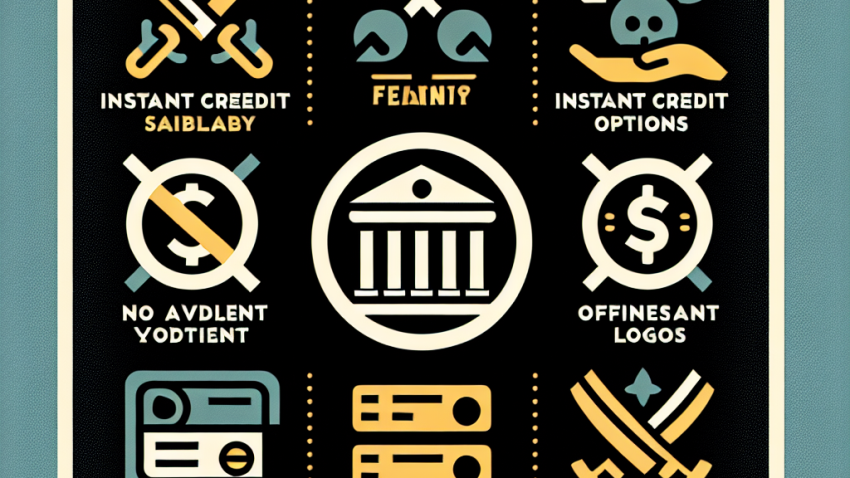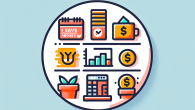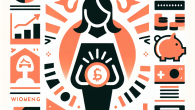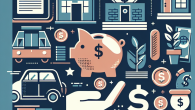
Why I Ditched Buy Now, Pay Later—and You Probably Should Too
How to Build Wealth in Your 30s Without Hating Every Minute of It
Let’s be real for a second—building wealth sounds like one of those things responsible adults say they do, right alongside meal prepping and having a “career trajectory.” But if you’re in your 30s, and the idea of money still stresses you out more than it motivates you, welcome to the club. I’m Rachel Simmons, and I’m here to tell you that financial independence doesn’t have to mean giving up what you love or living off canned beans until retirement.
Here’s the truth: your 30s are the decade where small, smart decisions can yield wildly outsized results. But the key? It has to be sustainable. Let’s ditch the guilt, embrace some simplicity, and get you on the path to wealth—on your own terms.
Why Your 30s Are Prime Time for Wealth Building
If your 20s were about survival and discovering who you are, your 30s are where the real magic starts. You (hopefully) have a better income, a clearer idea of what you want, and—here’s the kicker—time still on your side. Compound interest loves people in their 30s.
But the catch? Life gets busier, and expenses multiply like bunnies. So it’s crucial to create a financial plan that aligns with your lifestyle, not against it. Here’s how you do that—no jargon, no shame, just results.
Step 1: Prioritize Financial Clarity Over Perfection
This is where most people trip up. They think they need a 25-tab spreadsheet tracking every granola bar purchase. Nope. You just need to know:
- How much money is coming in (after taxes)
- Where it’s going each month (fixed costs vs. variable)
- How much you’re actually saving and investing (not just hoping to save)
There’s a beautiful confidence that comes from just knowing your numbers. I always tell clients: clarity is the foundation for choice. You can’t optimize what you can’t see.
Step 2: Automate the Hell Out of Your Savings
If you have to move money manually, you’re leaving your future up to how tired you are on payday. The solution? Automation.
Set up direct transfers so your paycheck hits and—boom—money slides into your high-yield savings, your Roth IRA, your brokerage account, or wherever it needs to be. No mental gymnastics, no stress.
Pro tip: Treat savings like a bill. It comes first, before anything else.
Step 3: Cut Expenses You Don’t Actually Care About
This isn’t about deprivation. I will never tell you to give up your weekend oat milk latte if you genuinely love it. I will, however, challenge you to review your transactions and ask yourself: “Did this really bring me joy or value?”
You’ll be shocked how much money flows to stuff you barely notice. By identifying those “meh” expenses and eliminating them, you create room to spend lavishly on what truly matters to you—and still save aggressively.
Step 4: Maximize Income, Not Just Frugality
Listen, even the best budget in the world can’t stretch a stagnant income forever. One of the most powerful things you can do in your 30s is invest in your earning potential.
Ways to do that:
- Negotiate your salary (a single raise can snowball over years)
- Switch jobs strategically—employers often pay more for new talent
- Build a side hustle leveraging your skills
- Invest in certifications or education that increase your market value
The goal is to create income streams that scale over time. You don’t need 20 jobs—you need one or two income drivers that work smarter, not harder.
Step 5: Invest Like a Grown-Up (Even If You Feel Like a Fraud)
This is where many 30-somethings freeze. “Investing feels complicated. What if I mess it up?” Here’s a comforting fact: index funds exist because most humans overthink investing.
You don’t need to be a Wall Street wizard. You just need to be consistent.
Starter checklist for 30-something investors:
- Contribute to retirement accounts (401(k), Roth IRA, etc.)
- Open a taxable brokerage account for additional investing
- Prioritize low-cost index funds or ETFs
- Reinvest dividends and avoid panic-selling
If your employer offers 401(k) matching and you’re not contributing enough to get it—please fix that ASAP. Free money is rare, and that’s what a match is.
Step 6: Protect What You’re Building
Financial independence also means stability. You can’t build wealth if you’re one emergency away from a meltdown. Here’s what to focus on:
- Emergency fund: Aim for 3–6 months of expenses in a high-yield savings account
- Insurance: Health, life (if others depend on you), renters/homeowners, and disability are must-haves
- Estate planning: Yes, even if your net worth isn’t rockstar-level—at least have a will and a designated beneficiary
These aren’t glamorous moves, but they safeguard the empire you’re building. Future you will be grateful.
Step 7: Make Your Financial Life So Simple It’s Boring
If you’re always tinkering with your budget or checking your portfolio, something’s wrong. Good financial systems run quietly in the background. If you set it up right, you’ll only need to check in monthly or quarterly.
Boredom, in this case, is a feature—not a bug. It means you’re doing it right.
Okay Rachel, But What Does Financial Freedom Actually Look Like?
It looks like this: Choices. The ability to walk away from what no longer serves you. The capacity to buy with intention, not impulse. The calm that comes from knowing you have your own back—financially and emotionally.
It doesn’t mean you’re retired by 38 and living in Bali (unless that’s your actual plan—no judgment). It means your life is built on a foundation of intention, not debt and drama.
And no, you don’t need a trust fund, six-figure job, or an obsession with spreadsheets to get there. You just need to start, stay consistent, and remember that your 30s are full of opportunity.
Let’s Wrap This Up
Building wealth in your 30s isn’t about suffering—it’s about optimizing. You make adult money now. It’s time to pair that with adult confidence.
Start where you are. Automate what you can. Keep joy in your financial journey. And if you need more support on this path, feel free to check our About Us page or get in touch with us directly.
You’ve got this. And I’ve got your back—without the boring lectures.









Leave a Reply